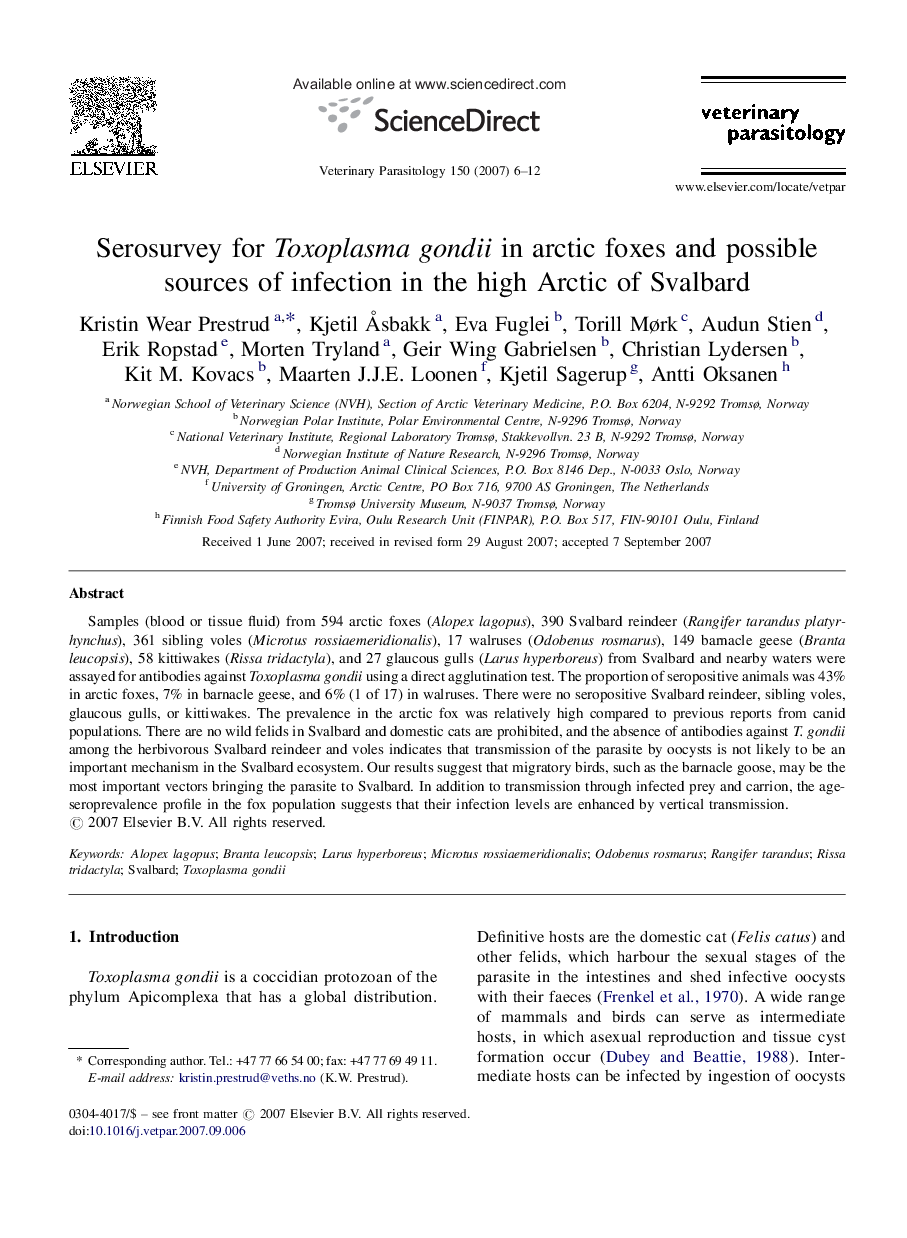| کد مقاله | کد نشریه | سال انتشار | مقاله انگلیسی | نسخه تمام متن |
|---|---|---|---|---|
| 2471835 | 1555775 | 2007 | 7 صفحه PDF | دانلود رایگان |

Samples (blood or tissue fluid) from 594 arctic foxes (Alopex lagopus), 390 Svalbard reindeer (Rangifer tarandus platyrhynchus), 361 sibling voles (Microtus rossiaemeridionalis), 17 walruses (Odobenus rosmarus), 149 barnacle geese (Branta leucopsis), 58 kittiwakes (Rissa tridactyla), and 27 glaucous gulls (Larus hyperboreus) from Svalbard and nearby waters were assayed for antibodies against Toxoplasma gondii using a direct agglutination test. The proportion of seropositive animals was 43% in arctic foxes, 7% in barnacle geese, and 6% (1 of 17) in walruses. There were no seropositive Svalbard reindeer, sibling voles, glaucous gulls, or kittiwakes. The prevalence in the arctic fox was relatively high compared to previous reports from canid populations. There are no wild felids in Svalbard and domestic cats are prohibited, and the absence of antibodies against T. gondii among the herbivorous Svalbard reindeer and voles indicates that transmission of the parasite by oocysts is not likely to be an important mechanism in the Svalbard ecosystem. Our results suggest that migratory birds, such as the barnacle goose, may be the most important vectors bringing the parasite to Svalbard. In addition to transmission through infected prey and carrion, the age-seroprevalence profile in the fox population suggests that their infection levels are enhanced by vertical transmission.
Journal: Veterinary Parasitology - Volume 150, Issues 1–2, 30 November 2007, Pages 6–12